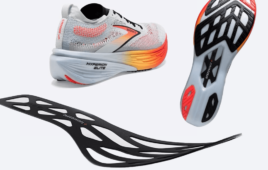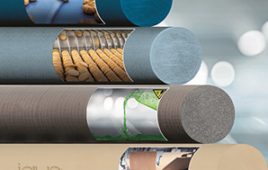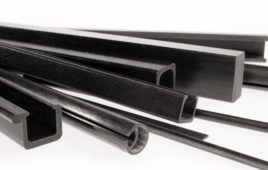Concrete isn’t thought of as a plastic, but plasticity at small scales boosts concrete’s utility as the world’s most-used material by letting it constantly adjust to stress, decades and sometimes even centuries after hardening. Rice University researchers are a step closer to understanding why.
The Rice lab of materials scientist Rouzbeh Shahsavari performed an atom-level computer analysis of tobermorite, a naturally occurring crystalline analog to the calcium-silicate-hydrate (C-S-H) that makes up cement, which in turn holds concrete together. By understanding the internal structure of tobermorite, they hope to make concrete stronger, tougher and better able to deform without cracking under stress.
Their results appear this week in the American Chemical Society journal ACS Applied Materials and Interfaces.
Tobermorite, a key element in the superior concrete Romans used in ancient times, forms in layers, like paper stacks that solidify into particles. These particles often have screw dislocations, shear defects that help relieve stress by allowing the layers to slide past each other. Alternately, they can allow the layers to slip only a little before the jagged defects lock them into place.
The researchers built the first computer models of tobermorite “super cells” with dislocations either perpendicular to or in parallel with layers in the material, and then applied shear force. They found that defect-free tobermorite deformed easily as water molecules caught between layers helped them glide past each other.
But in particles with screw defects, the layers only glided so far before being locked into place by the tooth-like core dislocations. That effectively passed the buck to the next layer, which glided until caught, and so on, relieving the stress without cracking.
This “step-wise defect-induced gliding” around the particle’s core makes it more ductile and able to adjust to stress, Shahsavari said, an assistant professor of civil and environmental engineering and materials science and nanoengineering.
“The insight we get from this study is that unlike the common intuition that defects are detrimental for materials, when it comes to complex layered crystalline systems such as tobermorite, this is not the case,” said Shahsavari, “Rather, the defects can lead to dislocation jogs in certain orientations, which acts as a bottleneck for gliding, thus increasing the yield stress and toughness.
“These latter properties are key to design concrete materials, which are concurrently strong and tough, two engineering features that are highly desired in several applications. Our study provides the first report on how to leverage seemingly weak attributes — the defects — in cement and turn them to highly desired properties, high strength and toughness.”
Shahsavari said he hopes the work will provide design guidelines for developing stronger, tougher concrete and other complex materials.
Filed Under: Materials • advanced




